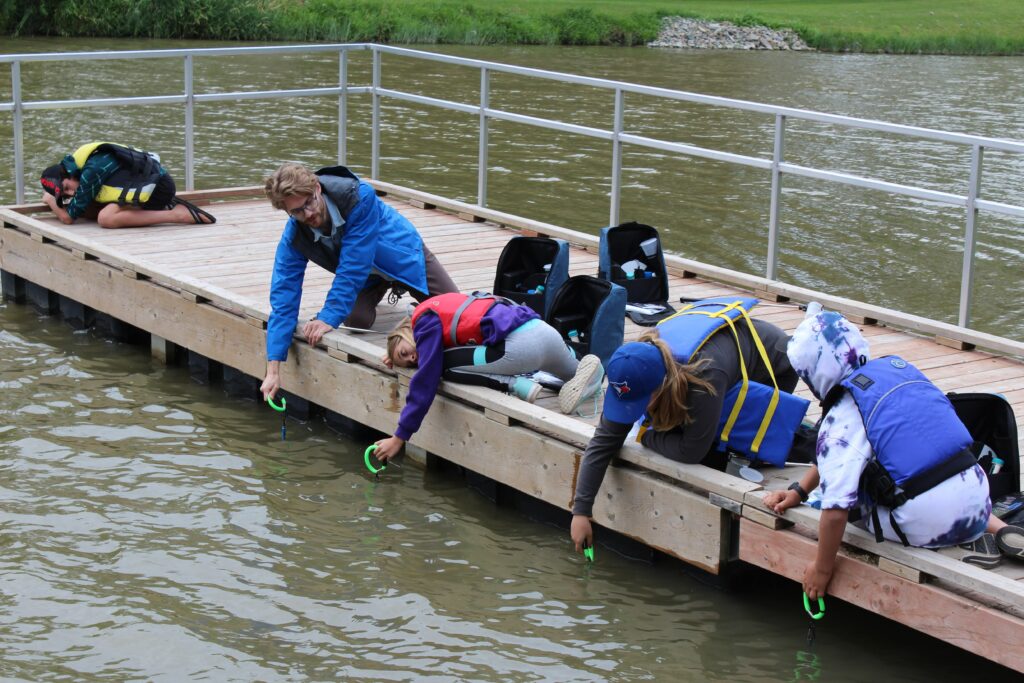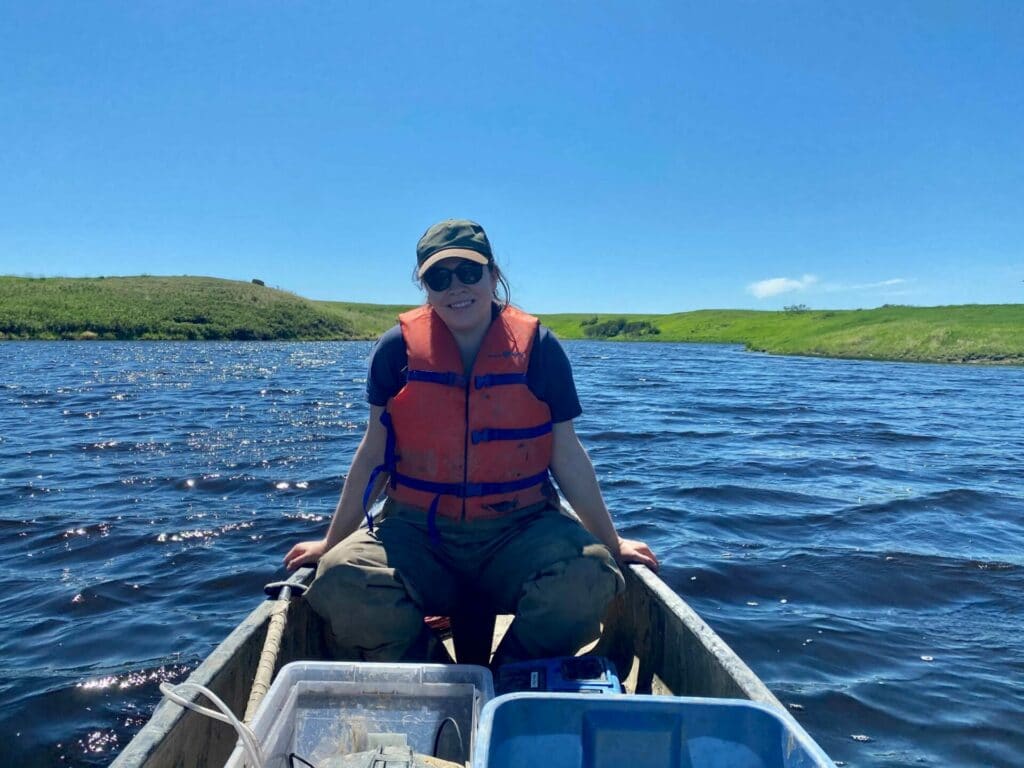Safety while water testing
Your safety while testing is of paramount importance
When you become part of the Water Rangers community, you acknowledge that you understand the risks associated with water testing activities and accept responsibility for your personal safety. Safety is essential to water quality monitoring. This page provides safety information for you and your group. Review and consider before you head to the water. When in doubt, do not sample. No test is worth risking injury or your life.
Can you swim?
As a rule of thumb, you should have the ability to swim if you are going to be entering the water to collect the water for your tests. If you do not know how to swim, you should not go in the water without taking precautions. Even if you can swim, it is still important to be cautious while water testing.
- If water is deeper than 0.5m, wear a lifejacket or personal floatation device (PFD) This is a must when sampling near swift moving or deep water, or when entering lakes or ocean with waves.
- Never sample alone, especially if you can’t swim.
- Use your reacher stick or a throw pail to retrieve water.
- If sampling in a boat, you must wear a lifejacket or PFD.
- Children should always wear a lifejacket or PFD when sampling.

Thunderstorms: When is it safe to come out?
According to Environment Canada, “once you are in a safe location either in a house or a car, stay inside for 30 minutes after the last rumble of thunder. Every time you hear thunder rumble you need to restart the clock until 30 minutes has passed and there has been no thunder heard.”
Weather
Always CHECK WEATHER REPORTS before out to test water.
When thunder roars, go indoors
If you hear thunder or see lightning stop immediately and return to your vehicle, your home, or, if this isn’t possible seek another structure for shelter.
Cold weather and winter sampling
Sampling in cold weather conditions requires many precautions. As more testing programs continue to sample year round, especially those looking specifically at the impact of road salts, cold water safety is essential. According to the Lifesaving Society‘s ice and cold water safety tips:
- Water in the fall and winter is colder than you think.
- Cold water shock.
- You can only survive a few minutes in cold water.
- Most drownings occur in water less than 20 degrees Celsius.
- No ice is without risk.
- Snowmobiling over frozen bodies of water poses a large risk.
Ice Safety Tips
- Check the ice thickness.
- Wear a lifejacket, it buys you time.
- If you are going out onto ice, know what to do if you break through.
Wildfire smoke
Read more in our article, Something’s in the air, on water testing in areas impacted by wildfires and wildfire smoke.
Avoid the water when there are unsafe conditions
There are certain weather events and conditions that when you absolutely should not enter the water to collect your water.

Stop your testing activities when any of the following conditions are present:
- floods
- large waves [>1.2m]
- rip currents when sampling in large lakes or the ocean
- high flow volumes in rivers and streams
- swift moving water
Use your judgement. If conditions appear unsafe, do not enter the water.
Equipment for the field to protect against common hazards
Here are some equipment that can help with common hazards and conditions:
Waders and water shoes
Waders and water shoes are a great choice to avoid discomfort, cold, or injury from:
- cold water
- skin infection from snails, molluscs such as mussels, large amounts of algae or waterfowl droppings
- Abrasion from excessive zebra and/or quagga mussels
- Glass, rocky beaches and rivers banks, plastics and garbages
***Remember that hip-waders will become anchors if they fill up with water. Do not wear waders in high water, high waves, or fast moving water.
Sunscreen and UV protections
- risk of sunburn – wear sunscreen/wide brim hat
- extreme heat – remain hydrated, take breaks as needed, wear light coloured,light weight clothing.
- bring lots of water
Insect repellant and tick removal kits
- bug bites – use insect repellant to avoid bug bites
- ticks – As ticks become more and more common, it’s important to take precautions to avoid getting bitten. Wear pants tucked in to high socks in closed shoes, and long sleeves. Check for ticks at the end of each sample excursion in tick-prone areas. In tick-prone areas, samplers are also encouraged to shower at the end of a sampling session, with warm water and soap, to remove ticks.
Bear bells and bear spray

Some of the areas where Water Rangers’ volunteers monitor are remote forested locations, home to many amazing animals, including bears. If you’re sampling in bear country, take proper precautions before heading out to your site.
- Before going on your sampling adventure, let someone know where you’re going and when you’ll be back. Better yet, go with a friend.
- Wear bear bells and bring bear spray
- Follow proper bear etiquette
Protect your health from contamination
- Wash your hands or use hand sanitizer after sampling, especially if you suspect contamination.
- Never drink untreated water. Our water bottles are great for bringing clean water from home!

Stay safe and have fun!
Still have questions?
Feel free to contact us with any questions or concerns you may have about water safety when sampling.
Wait, there’s more!
Check out our blog for more information on how to have a safe and successful water testing season.
